
Designing Order: A UI to Scale Global Supply Chain Testing
At a glance
My Role
UX Lead / UI Designer
Problem
Oritain’s supplier testing process was manual and error-prone—limiting data quality, scalability, and revenue. The challenge: design a digital flow that translated a complex, multi-step process into a clear, guided UI that suppliers around the world could trust and use with confidence.
Impact
- Achieved 100% task completion in testing.
- Improved data accuracy and reduced duplicates—crucial for the quality of the data store powering future data products.
- Built a modular UI system that supports scalable future features and supplier expansion.
- Increased supplier confidence and satisfaction.
- Unlocked a scalable new revenue stream—helping secure one of Oritain’s largest client contracts to date.
Key Insight
Complex service flows can become scalable UI systems through plain language, step-by-step guidance, and modular design—supporting non-native English speakers and reducing errors.
Approach
I mapped the manual workflow with service teams, prototyped modular UI patterns in Figma, and extended our design system. I used AI tools to simplify language for basic English comprehension and ran remote usability tests with suppliers worldwide. Throughout, I navigated major design pivots—like payment model changes—balancing MVP delivery with long-term design principles.
Timeline
- 3 weeks research & mapping
- 3 months design iterations
- 1 month testing with refinements
Problem Context & Key Challenges
Oritain, a global leader in supply chain verification, faced a critical challenge: its supplier testing process was manual, slow, and prone to error. Clients paid the cost, while suppliers worldwide navigated a complex, multi-step workflow—often across regions, time zones, and languages.
The opportunity was to empower suppliers to manage testing directly, reducing client oversight, improving data quality, and unlocking a scalable new revenue stream.
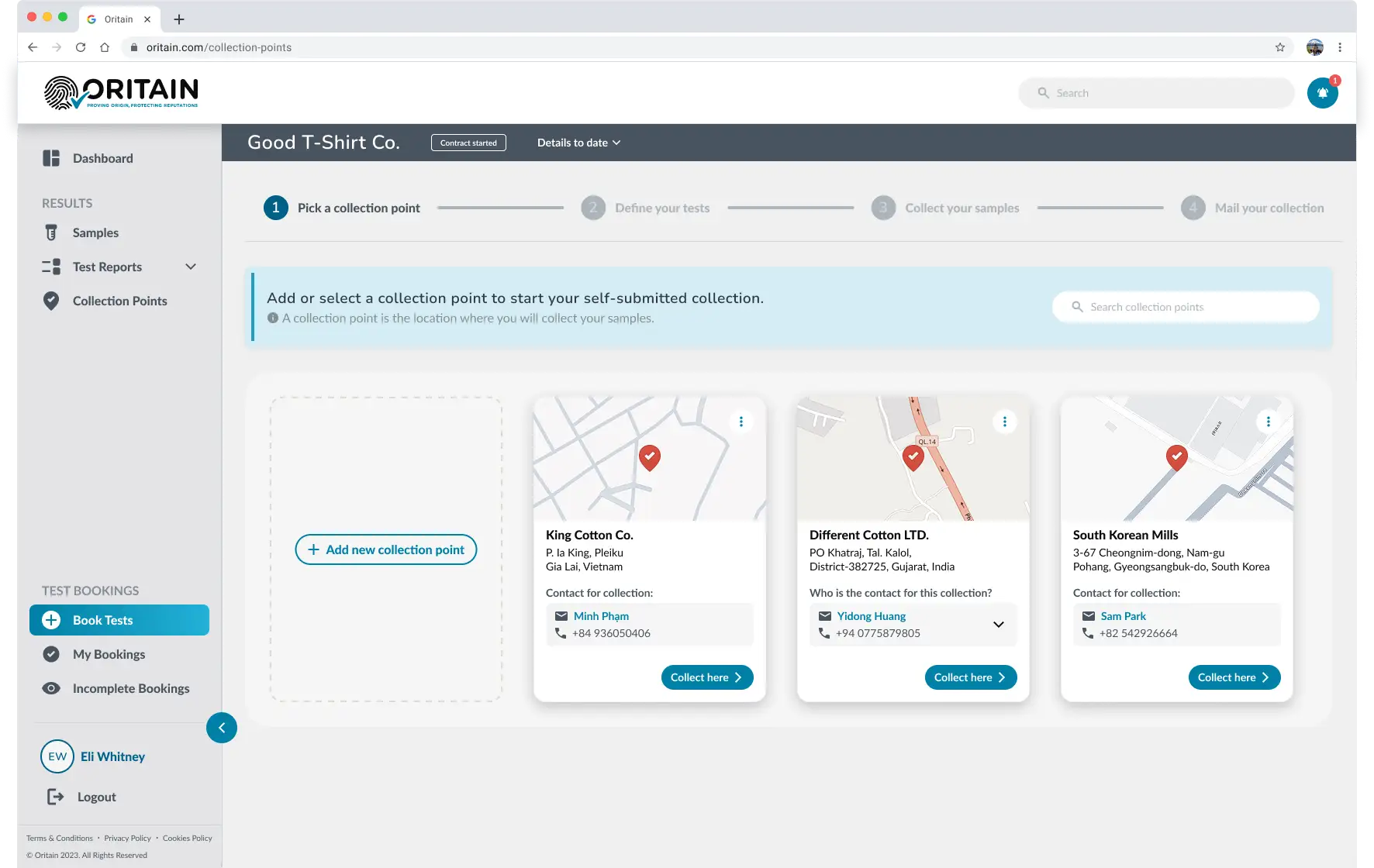
Key challenges included:
- A multi-step, high-stakes workflow requiring precise data entry to avoid costly errors and wasted tests.
- A global, multilingual user base with many suppliers using English at a basic proficiency level.
- Manual, error-prone operations relying on spreadsheets, emails, and copy-pasting, leading to frequent data errors and duplicates.
- Evolving requirements and shifting priorities, including mid-project pivots like payment model changes, demanding flexible design strategies.
- A complex, un-systematized manual process that needed to be translated into a scalable digital flow.
Research & Service Mapping (~3 weeks research & mapping)
Mapped Manual Workflow
I interviewed service delivery staff across the organization to understand the day-to-day testing process and map the manual workflow. Like many startups, Oritain had evolved through quick, manual fixes to meet growing client needs. As a result, no two service flows were exactly alike, and requirements kept shifting as I dug deeper.
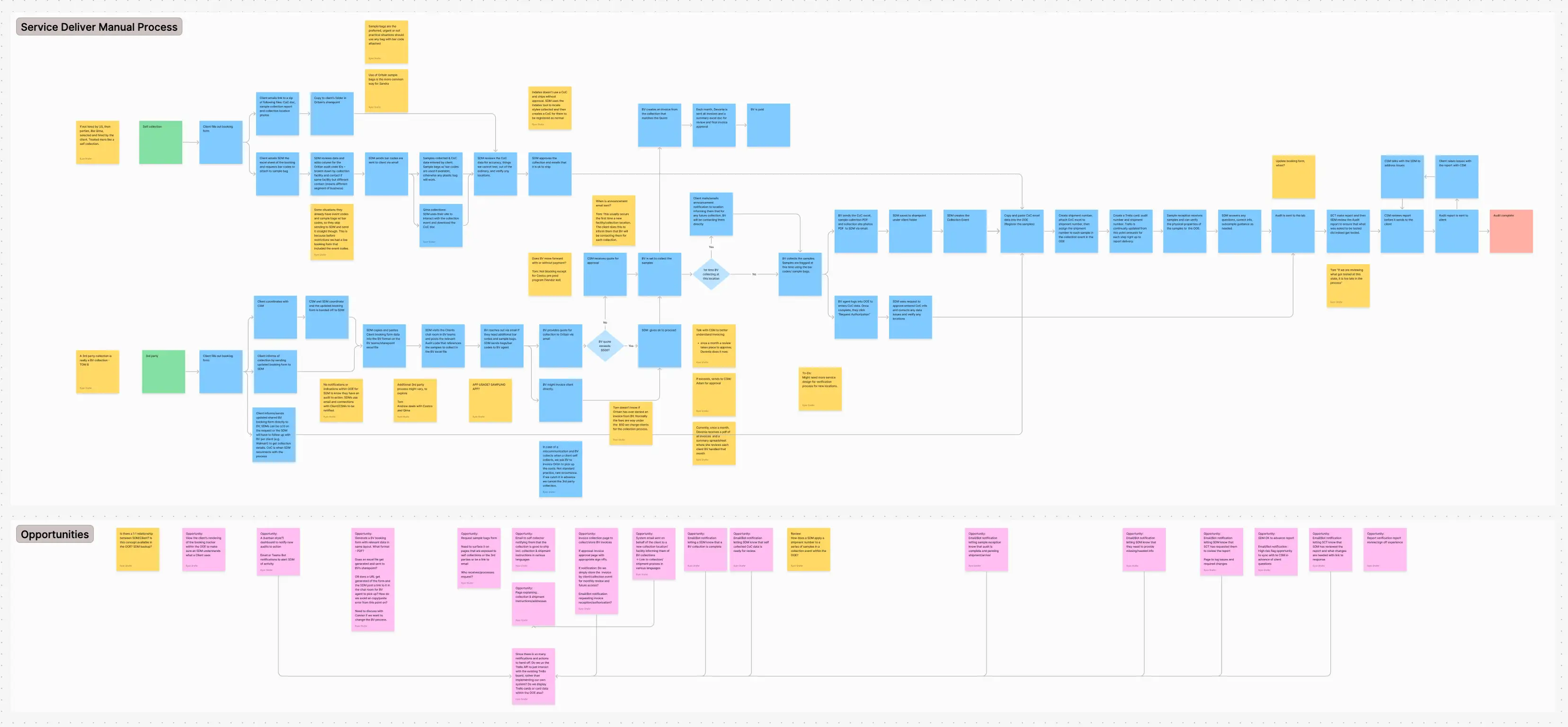
This reinforced the need for a flexible UX strategy: build just enough structure to move forward while staying ready to adapt.
Design Principles & Strategic Approach
To succeed, the UI needed to:
- Leverage research-backed personas and model key concepts (contracts, facilities, tests) as interactive, modular objects for clarity and reusability.
- Minimize cognitive load through a guided, step-by-step flow using plain, accessible language simplified with AI tools to support non-native English speakers.
- Reflect Oritain’s manual process to maintain testing accuracy and internal alignment.
- Prioritize tablets and desktops—the primary devices used by global suppliers.
- Prevent costly errors by designing for data accuracy and clarity.
- Stay modular and scalable for future adaptation and client-facing use cases.
- Avoid building everything in-house by integrating Stripe for payments and DocuSign for contracts—saving time, ensuring compliance, and improving user trust through familiar tools.
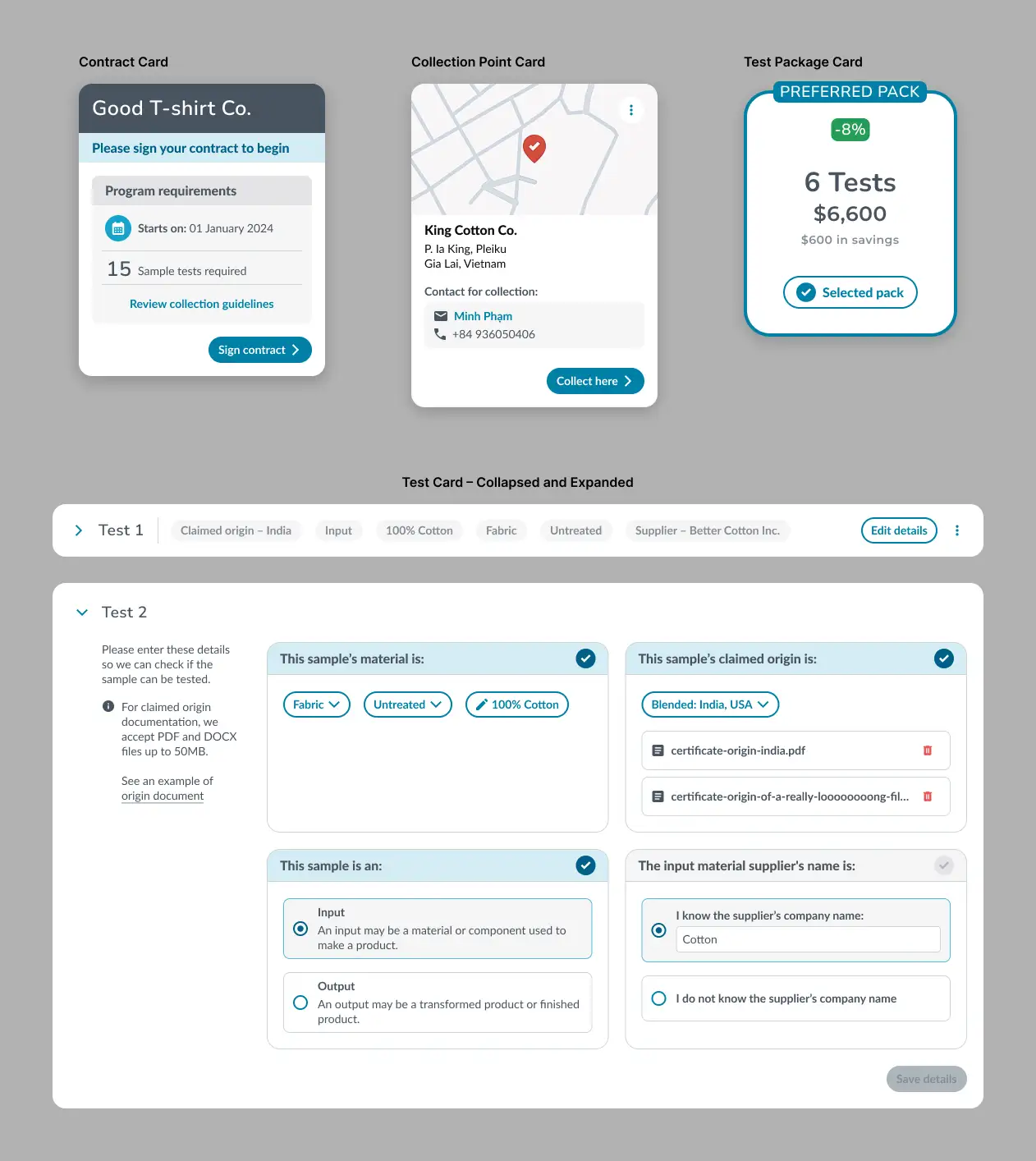
From Manual Workflow to Modular UI System (3 months designing and iterating)
Designing a Digital Workflow
I sketched low-fidelity UI flows to translate the manual workflow into a clear, guided digital experience that preserved critical details while improving usability. These flows aligned stakeholders across Service Delivery, Product, and Engineering around a shared vision.

I then iterated in Figma—using and extending Oritain’s design system—to prototype the full end-to-end supplier experience. These prototypes helped define technical requirements and served as the foundation for moderated remote usability testing with suppliers worldwide.
Major Design Pivots
- Payment model: I recommended a familiar cart/checkout flow to minimize friction and support future scenarios, but leadership opted for a bundled credit model mirroring client sales. This increased cognitive load, introduced complex UI states, and required midstream redesigns.
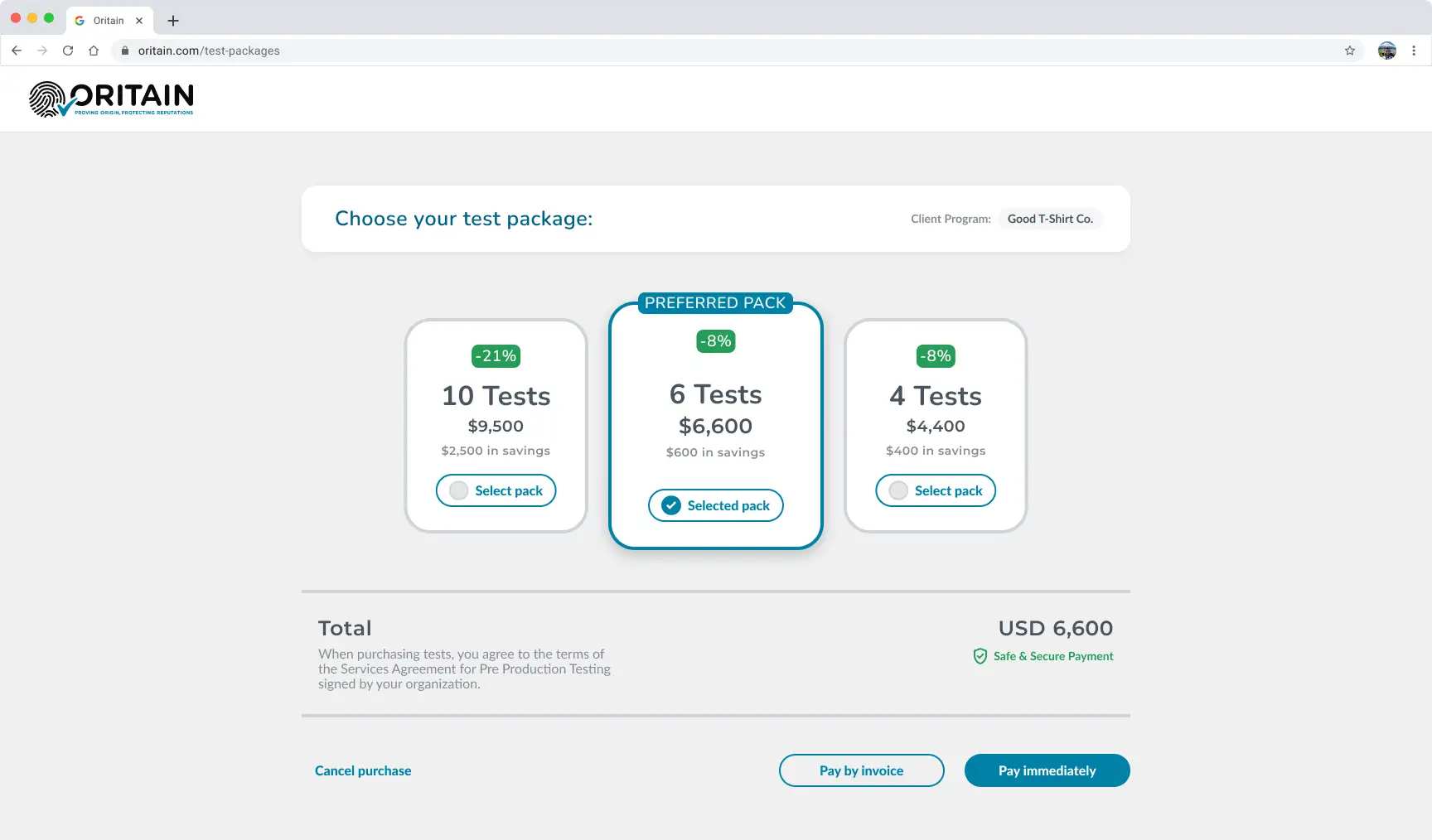
- Late technical discoveries: Requirements like handling complex material composition data emerged deep into the build. I designed lightweight but robust UI patterns to capture nuanced inputs and prevent data errors without derailing MVP timelines.
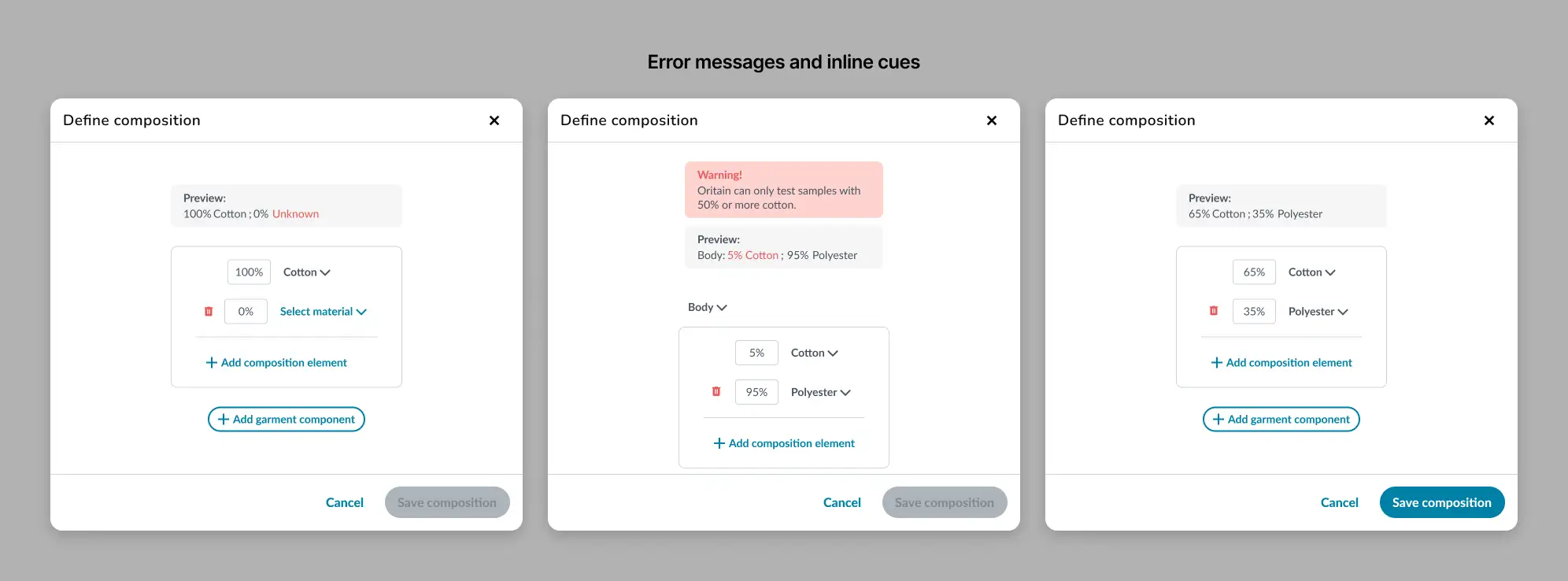
System & Accessibility Considerations
- Used AI-assisted UX writing to ensure clear, low-reading-level text, prioritized error prevention and clarity to avoid costly wasted tests and maintain supplier trust.
- Designed for fluid layouts and touch support on tablets and desktops, reflecting suppliers’ typical factory-floor shared devices rather than phones.

Validating the Design Through Usability Testing (~1 Month Across Two Phases)
In Phase 1, early Figma prototypes tested core flows and object models. Completion rates hovered around 70%, with failures pointing to usability gaps in effort and clarity. Fixes were clear and actionable.
In Phase 2, refined pre-launch software addressed major blockers and improved language. Task completion rose to 100%, confirming the effectiveness of design decisions.
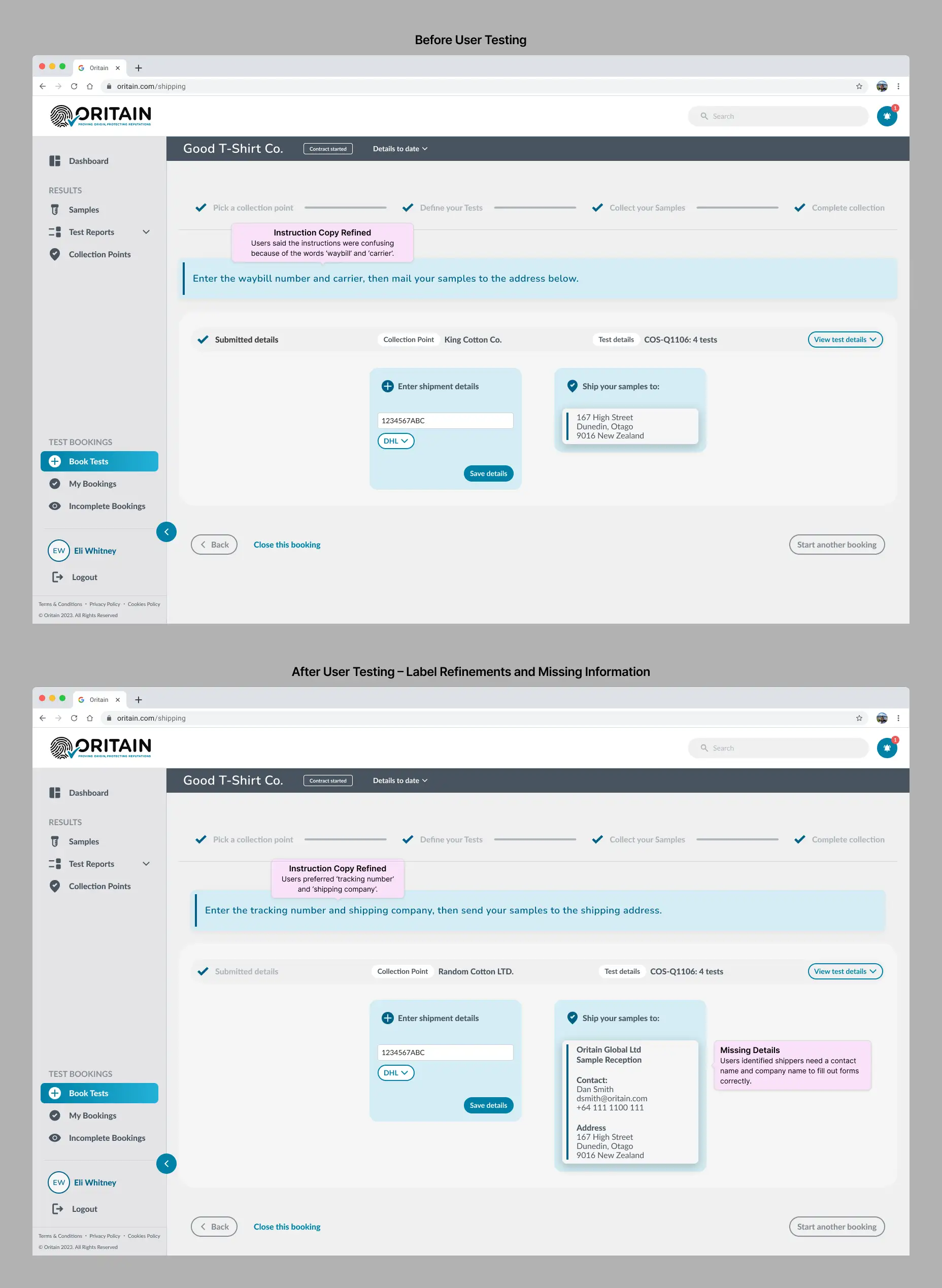
Throughout both testing phases, I resolved language and navigation issues, adapted UI flows in response to evolving requirements, and balanced those changes against MVP constraints to preserve scalability. Along the way, I also uncovered opportunities for future features.
Impact
The redesigned supplier portal delivered significant benefits:
- 100% task completion in usability tests with the pre-launch build.
- Reduced Errors: Significantly minimized data entry mistakes and duplicate records through guided input and validation.
- Scalability: The modular design system supports ongoing feature/flow expansion.
- Revenue Growth: The portal enabled Oritain to open a new scalable revenue stream.
- Business Success: Played a key role in securing one of Oritain’s largest client contracts to date.
- Improved User Confidence: Suppliers reported higher satisfaction and ease of use.
Suppliers report the portal being easy to navigate, with timely guidance and efficient troubleshooting. We are very pleased with this demonstration of commitment to the customer experience. [\Redacted Client] has high standards, and we appreciate your partnership in easing the supplier compliance burden.
Reflection
This project reinforced the power of strong design principles as an anchor in complex, high-stakes UI work. The supplier experience demanded translating a nuanced, multilingual service flow into a clear, step-by-step digital flow—while navigating shifting business priorities.
When decisions like the payment model diverged from ideal UX patterns, I relied on core principles—clarity, error prevention, modularity—to keep the product cohesive and usable.
It also marked my first use of AI-assisted UX writing at scale, which proved essential for ensuring clarity without localization—a critical factor for non-native English speakers across global supply chains.
In parallel, there are structural opportunities to improve the flow. Optimizing it will require close collaboration with Service Delivery and Science to redefine what qualifies as an acceptable test. While the manual process prioritized flexibility, a scalable digital model depends on clear, standardized rules that translate into the UI—reducing friction, increasing speed, and enabling long-term growth.
More than anything, this work sharpened my ability to balance ideal solutions with real-world constraints. It taught me when to push, when to adapt, and how to protect the user experience either way. That balance — between principled design and pragmatic delivery — is what I bring to every complex UI initiative I lead.

